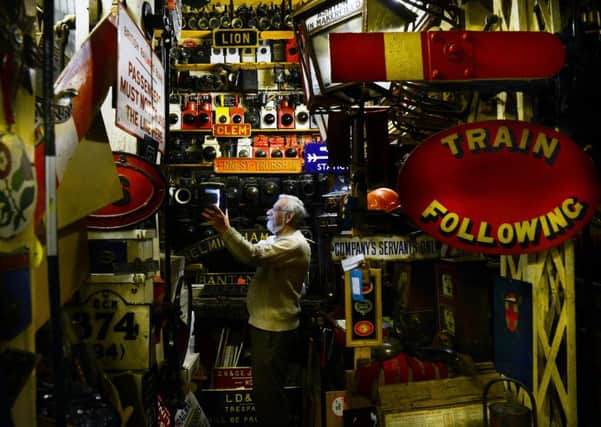Railways in its DNA: Doncaster goes back to the future


Two generations on, the collection that began at a school in Doncaster has grown into a national treasure trove.
Their passion ignited by the receipt of a signed photograph from the famed engineer Sir Nigel Gresley, the pupils and teachers of Doncaster Grammar began hoarding genuine railwayana in the 1930s. As the industry threw out artefacts in the rush from steam to diesel, their stash grew to some 2,000 objects.
Advertisement
Hide AdAdvertisement
Hide AdMost of it has remained unseen for years. But next month, a “pop-up museum” in the town’s principal shopping centre will bring Doncaster’s railway past face to face with its future.
The development comes two years after a smaller display at the nearby Mansion House. That was such a success that a greatly enlarged version, augmented by exhibits from other collections, has now been pieced together.
“There was a limit to what you could fit into a Grade I listed building,” said Richard Young, of Business Doncaster, who is behind the new exhibition.
“We could only get a small selection into the Mansion House. This time, we hope to give people a real feel for the era.”
Advertisement
Hide AdAdvertisement
Hide AdAs the event straddles Valentine’s Day, that will include the opportunity to be photographed on a railway bench as either Trevor Howard or Celia Johnson’s character in the film, Brief Encounter. A 1940s trenchcoat and fedora is optional.
The attraction, which will fill two retail units at the Frenchgate Centre and also involve neighbouring outlets like Waterstones and WH Smith, will celebrate not only Doncaster’s legacy but also what it sees as the long-distance journey ahead.
Some 10,000 people are employed in the town’s rail industry still - 15,000 if you include the wider catchment - and as demands on the network grow, so does Doncaster’s facility to service it.
This autumn, the National College for High Speed Rail will open there on a new campus, one of only two in the country. Its mission is to train the thousands of engineers needed to fulfil rail contracts over the coming decades - including the controversial HS2 high speed line which will eventually connect Yorkshire with the capital.
Advertisement
Hide AdAdvertisement
Hide AdA new generation of “Azuma” trains, running at conventional speed on the east coast main line from next year, will also be serviced there, at a new Hitachi depot.
Railway building is in Doncaster’s DNA, and the makeshift museum counts among its inventory the original nameplate of Cock O’ The North, the great steam locomotive engineered by Gresley and built in the town’s LNER works in 1934, just as Flying Scotsman had been, 11 years before.
That, along with signalling lanterns, signs and other paraphernalia, had been collected assiduously by the grammar school’s railway society.
“Thank goodness these enthusiasts saved so much from that era, because otherwise it would have been scrapped,” Mr Young said.
Advertisement
Hide AdAdvertisement
Hide AdThe National Railway Museum in York concurs, having declared the old Grammar School collection to be of national importance.
But for 40 years it remained locked away from almost everyone. After interest in the railway society faded in the 1970s, it fell to one former teacher, the late Tony Peart, to care for it.
Its trustee now is Dave Rogerson, a former teacher at the school, which later became Hall Cross Academy. He said: “Tony went everywhere gathering things. He’d go to building sites where they were dismantling old railways and he’d ask them for things.” The collection, Mr Rogerson said, had been hidden away for too long.
“It’s well-known among railway circles, but it is time it was brought to a much wider audience. We are hoping many people will come out to see the items at Frenchgate. Only a few people have had a glimpse, so hopefully this will make everyone aware of what is within the archive.”